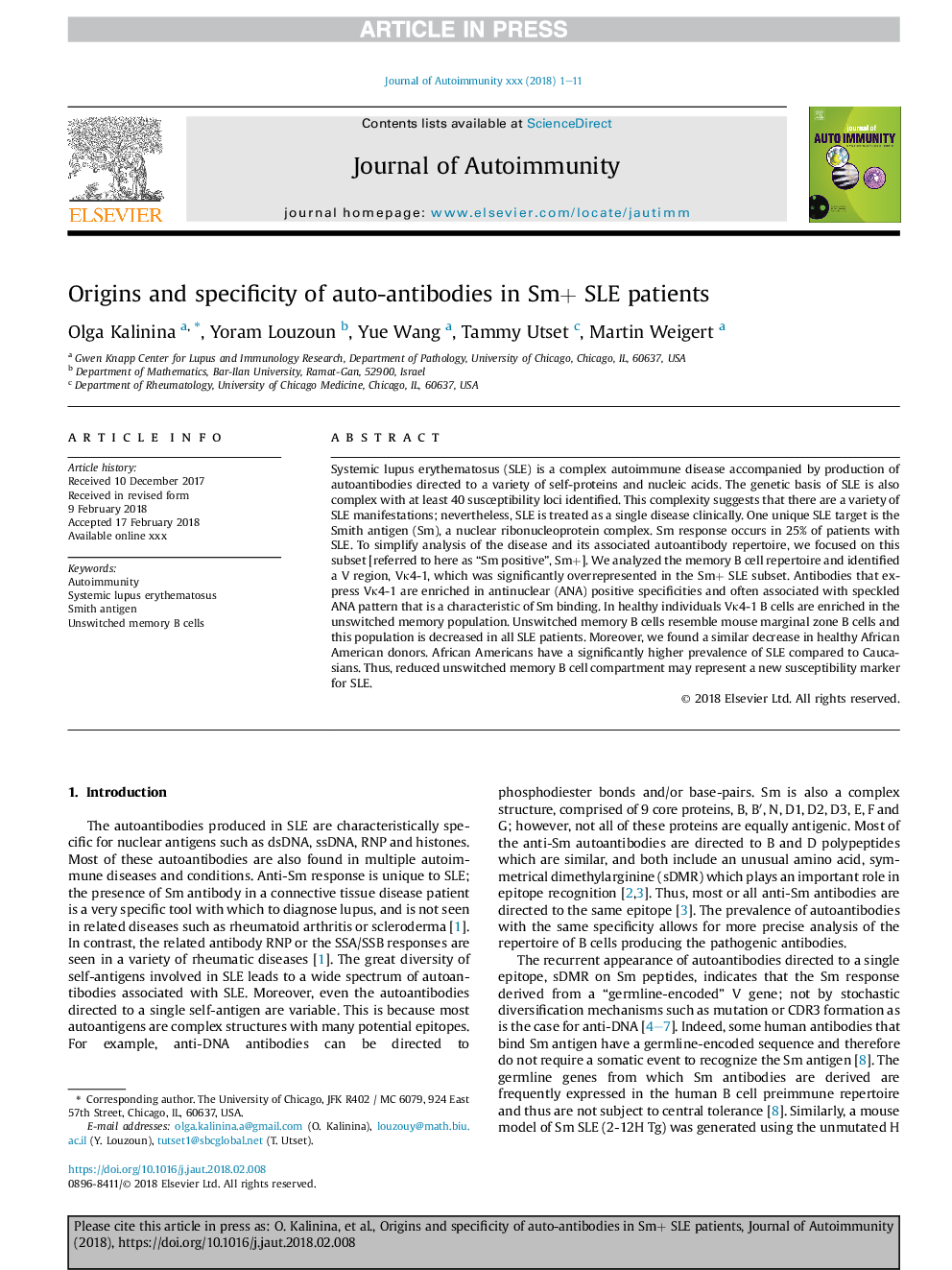| Article ID | Journal | Published Year | Pages | File Type |
|---|---|---|---|---|
| 8739522 | Journal of Autoimmunity | 2018 | 11 Pages |
Abstract
Systemic lupus erythematosus (SLE) is a complex autoimmune disease accompanied by production of autoantibodies directed to a variety of self-proteins and nucleic acids. The genetic basis of SLE is also complex with at least 40 susceptibility loci identified. This complexity suggests that there are a variety of SLE manifestations; nevertheless, SLE is treated as a single disease clinically. One unique SLE target is the Smith antigen (Sm), a nuclear ribonucleoprotein complex. Sm response occurs in 25% of patients with SLE. To simplify analysis of the disease and its associated autoantibody repertoire, we focused on this subset [referred to here as “Sm positive”, Sm+]. We analyzed the memory B cell repertoire and identified a V region, Vκ4-1, which was significantly overrepresented in the Sm+ SLE subset. Antibodies that express Vκ4-1 are enriched in antinuclear (ANA) positive specificities and often associated with speckled ANA pattern that is a characteristic of Sm binding. In healthy individuals Vκ4-1 B cells are enriched in the unswitched memory population. Unswitched memory B cells resemble mouse marginal zone B cells and this population is decreased in all SLE patients. Moreover, we found a similar decrease in healthy African American donors. African Americans have a significantly higher prevalence of SLE compared to Caucasians. Thus, reduced unswitched memory B cell compartment may represent a new susceptibility marker for SLE.
Related Topics
Life Sciences
Immunology and Microbiology
Immunology
Authors
Olga Kalinina, Yoram Louzoun, Yue Wang, Tammy Utset, Martin Weigert,
